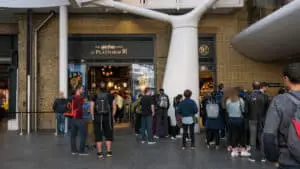A Journey Through the Grand Bazaars of the Middle East
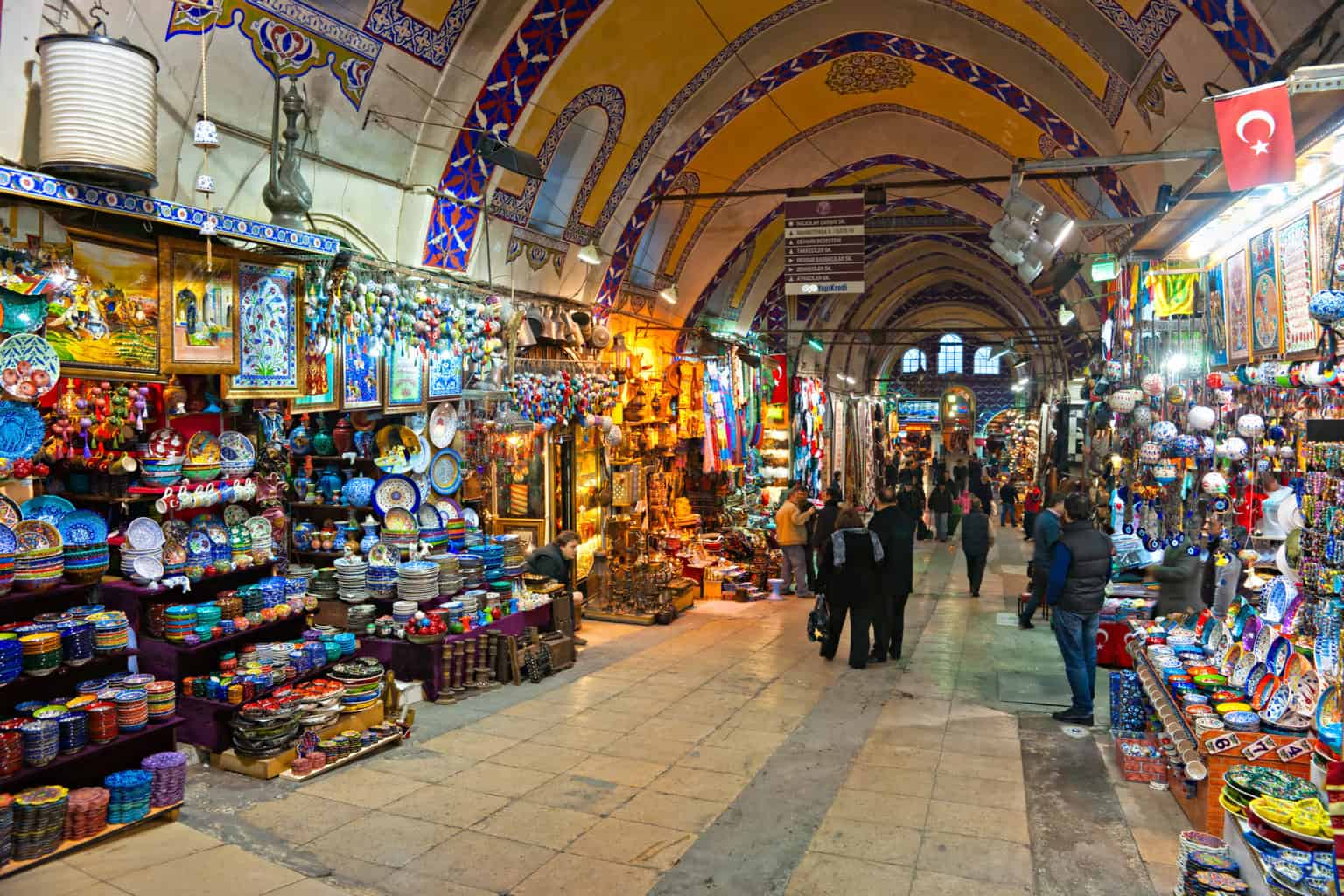
Updated On: April 24, 2024 by Raghda Elsabbagh
The Grand Bazaars of the Middle East stand as mesmerising beacons of history, encompassing the hustle and bustle of trade that has shaped civilisations. More than just spaces for commerce, these marketplaces have influenced the cultural and economic landscapes of the regions they serve. From local crafts to exotic spices, bazaars have historically been vibrant activity centres, reflecting the dynamic nature of the societies around them.
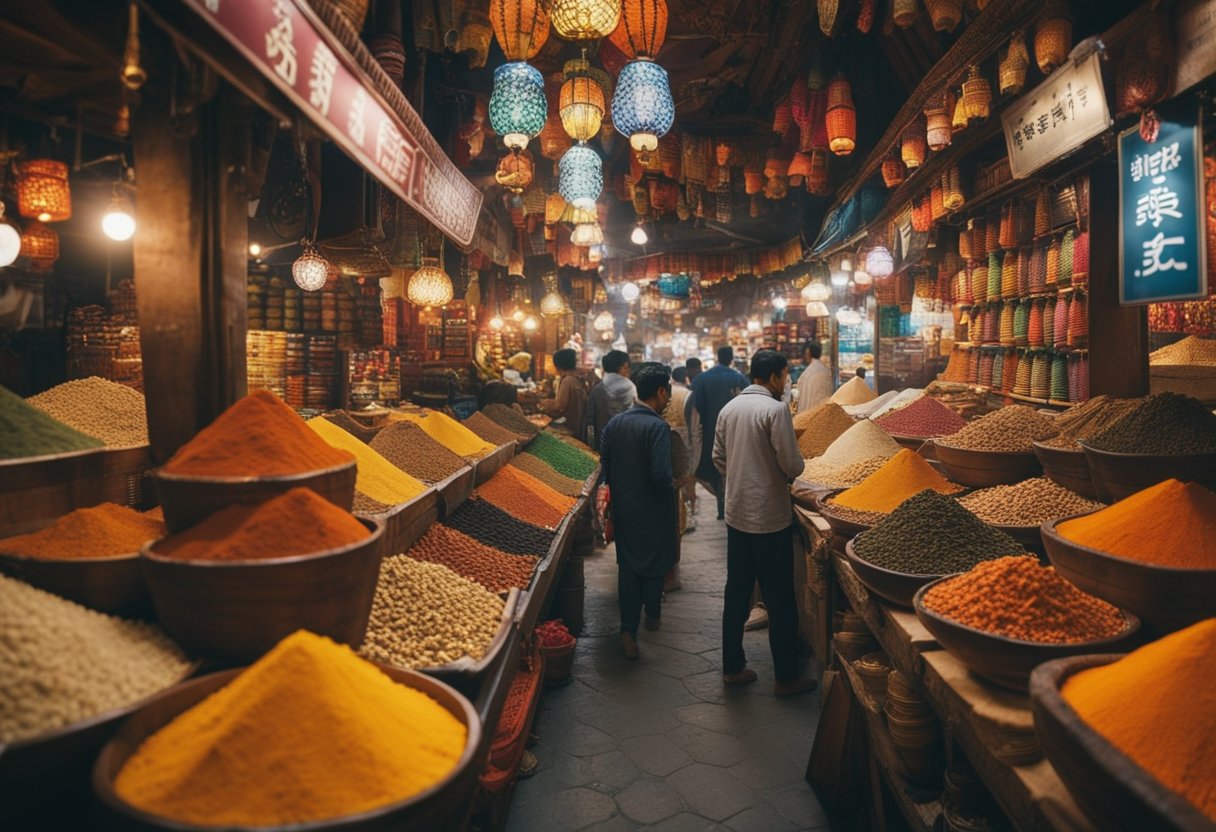
Our exploration dives into the intricate alleyways that wind through these iconic markets, revealing an architectural splendour that holds stories of the past. The bazaars’ evolution over time showcases their resilience amid political shifts and changing economies. They are not simply places of trade; they’re the pulsing hearts of cities, where the soundtrack of merchant calls and the aroma of local cuisines provide an immersive experience into everyday life, traditions, and the endurance of these commercial hubs.
Table of Contents
Origins of Middle Eastern Bazaars
The bazaars of the Middle East are steeped in a rich history that intertwines with the development of trade and commerce in the region. Merchants from various lands were the lifeblood of these vibrant marketplaces. The earliest bazaars likely emerged alongside the rise of Islam, which facilitated the trade routes across the Middle East.
In regions like Mesopotamia, ancient marketplaces played a critical role in urban development and were central to economic life. As Islam spread across Arabia and the Persian territories, bazaars became synonymous with city life. These markets operated within an elaborate network that stretched from the Silk Road to the corners of the Ottoman Empire.
Bazaars were often strategically located near caravanserais, which provided lodgings for travellers and their caravans, including Silk Road merchants. This proximity was essential for merchants who relied on safe places to rest and replenish before continuing their trade missions.
The structure of a bazaar was designed not just for trade but also as an expression of the culture and society. They often featured intricate designs, with narrow lanes covered by high domes, fostering a bustling yet intimate atmosphere where haggling was the norm.
Iconic Grand Bazaars of the Middle East
The bazaars of the Middle East are symbolic of the region’s rich tapestry of trade and culture. Each market is a historical and sensory treasure trove, beckoning visitors to explore.
Grand Bazaar, Istanbul
In the heart of Istanbul lies the Grand Bazaar, one of the world’s largest and oldest covered markets. The bazaar was constructed between the 15th and 17th centuries, showcasing its prime significance during the Ottoman period. This era highlights the bazaar’s role as a central marketplace linking Europe and Asia, mirroring the vast Ottoman influence on trade routes.
This sprawling complex boasts over 4,000 shops, inviting a thrilling exploration of Turkish craftsmanship. A labyrinth of lanes unwinds, revealing exquisite jewellery, vibrant textiles, and aromatic spices that reflect Türkiye’s soul. A stroll through the historic arcades takes one on a journey back in time to when the bazaar was a pivotal hub of the Mediterranean trading world.
Souk al-Madina, Aleppo
Steeped in centuries of history, Aleppo’s Souk al-Madina is a testament to the city’s former standing as a mercantile powerhouse. Despite bearing scars from recent conflicts, the souk’s significance as a cradle of Arabic culture and commerce endures. As one of the region’s most extensive souks, the market was once alive with the buzz of traders and the richness of Syrian heritage.
Khan al-Khalili, Cairo
Cairo is home to Khan al-Khalili, an ancient bazaar filled with a dizzying array of goods, from antiques to gold ornaments. It has been a hub of Egyptian commerce since the 14th century. Its winding alleys and hidden courtyards echo with the barter of sales, a timeless dance of transaction and tradition. Discover the charm of Khan al-Khalili, where tourists mingle with locals in a vibrant microcosm of Egyptian society.
Architectural Significance
We must recognise the architectural significance of these markets as a crucial element of their historical importance.
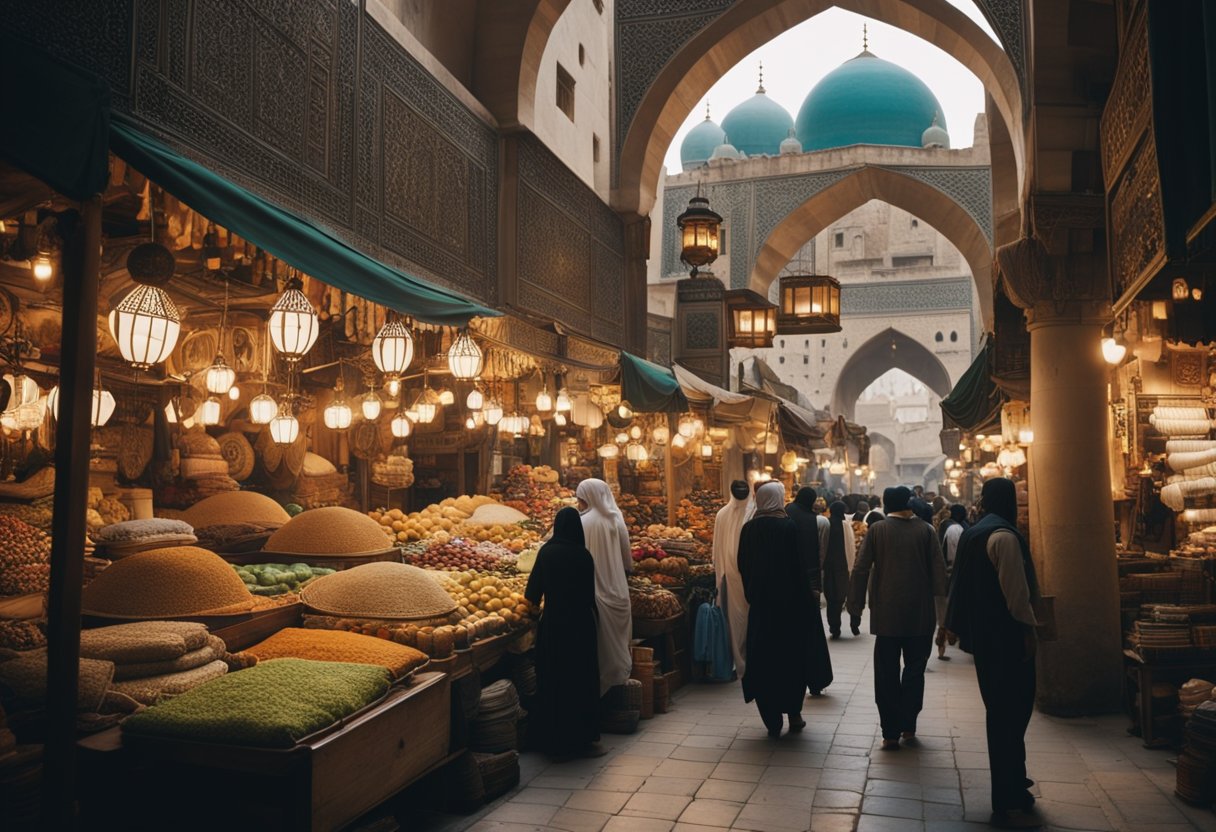
Design and Layout
The Grand Bazaars of the Middle East are exemplary of the region’s architectural heritage. The Grand Bazaar of Istanbul, also known as Istanbul’s Kapalıçarşı, showcases unique architectural features such as its labyrinthine layout, vaulted brickwork, and ornate entrances, which are characteristic of Ottoman-era design and reflect the Bazaar’s historical importance.
This covered market showcases robust design born from the need to sustain bustling commerce while offering protection from the elements. The Grand Bazaar’s structure consists of vaulted ceilings and vast networks of intersecting passages, hosting thousands of shops. Affected by numerous earthquakes, the bazaar has been restored repeatedly, ensuring its endurance through centuries. The complex includes various hans—enclosed courtyards surrounded by workshops or lodgings—each serving as a fulcrum of commercial activity.
Many of these bazaars also house mosques, demonstrating the intimate connection between commerce and spirituality in the Ottoman Empire. Notably, the Pera district’s bazaars reflect a European influence on Ottoman market architecture, integrating a more open and airy design.
Influence on Modern Architecture
These historical markets have left their imprint on contemporary architecture. While the bazaars were fundamentally designed for commerce, their intricate layouts influenced modern shopping malls’ designs. In particular, the Cevahir Bedesten, the heart of the Grand Bazaar, inspired the enclosed shopping spaces we are familiar with today.
The concept of a centralised marketplace surrounded by assorted shops has evolved into our modern-day shopping centres. Moreover, the lush decoration of fountains and richly woven carpets found within these markets have influenced aesthetic elements in contemporary establishments. The decorative gates leading into the bazaars have also provided a template for the grand entrances of today’s shopping complexes, blending form and function to create welcoming yet secure thresholds.
Cultural Importance
As we explore the grand bazaars of the Middle East, it’s crucial to understand their role beyond mere marketplaces. They are vibrant hubs of interaction and exchange, brimming with cultural significance that has shaped history.
Centres of Social Life
Turkish and Persian bazaars stand out as quintessential examples of spaces that have historically served as thriving centres of social interaction. For instance, the Grand Bazaar in Istanbul wasn’t just a place for trade but also a spot where people from all walks of life could gather. In these bazaars, information was exchanged, news was spread, and citizens engaged in negotiation and camaraderie.
Here, one might encounter poets reciting verses, local Jewish, Greek, and Arabian merchants amid lively haggling, or travellers from distant lands sharing tales reminiscent of Arabian Nights. Such scenes underscore the bazaars’ position at the heart of social life in cities like Cairo and throughout North Africa and the Middle East.
Cradles of Diversity
The cultural tapestry of the Middle East’s bazaars is a rich mosaic of languages, religions, and traditions. In the shaded walkways of these markets, Islam is prominently practised alongside other faiths, showcasing an environment where diverse communities have coexisted for centuries.
One can’t ignore these marketplaces’ role in creating a melting pot of cultures. The Persian bazaars, with their vaulted passageways and the scent of spices wafting through the air, served economic purposes and were platforms for cultural exchange that impacted languages and customs across the region. They fostered a sense of togetherness and mutual respect among different communities, which is still evident in the bustling bazaars that continue to attract locals and tourists alike.
Economic Impact
In our exploration of Grand Bazaars in the Middle East, we discern their pivotal role in shaping not only the economy of Islamic cities but also in influencing broader economic trends. Let us examine the facets of this impact more closely.
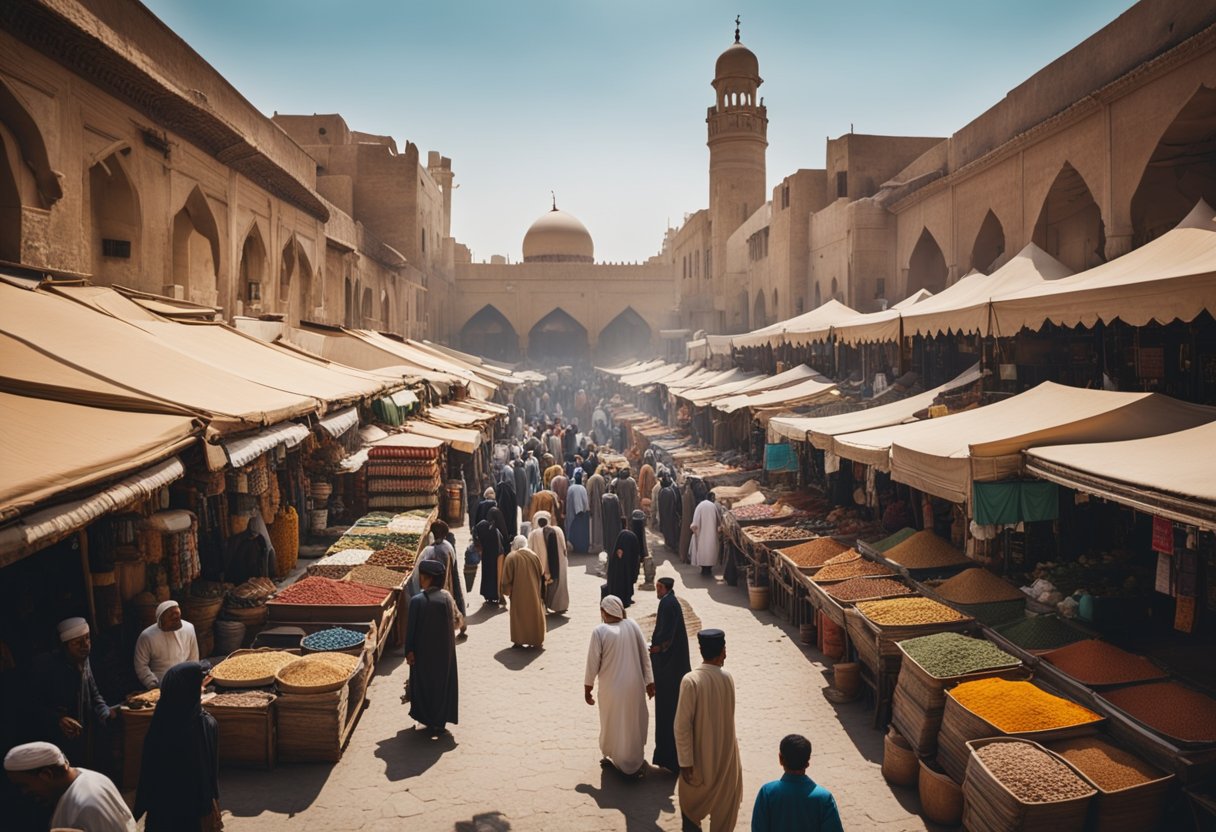
Trade and Commerce
Trade has been the lifeblood of Middle Eastern bazaars for centuries. In the Ottoman Empire, markets were bustling hubs where traders from diverse backgrounds converged to buy and sell goods. Commodities like spices, leather, and jewellery created a network of commerce that connected Islamic cities to Europe and beyond. Shops within the bazaars stood as a testament to the robust trade systems, and the influx of goods through these markets significantly bolstered the population’s prosperity.
The architecture and urban transformation of historical markets were critical in facilitating trade. They housed commercial activities and supported social and political interactions, infusing the city’s economy with vibrancy and dynamism.
Tourism and Modernity
As times have progressed, bazaars have adapted, becoming focal points for tourists seeking souvenirs and authentic cultural experiences. The transaction between tourists and bazaars has brought about a form of modernity that respects tradition while invigorating local economies. Visitations to grand bazaars are a core component of tourism in the Middle East, with holidaymakers eager to delve into the heart of Islamic cities and bring home tangible memories crafted by local artisans.
The impact on modernity is detailed in discussions on how bazaars shaped trade by adapting to the new demands while preserving the cultural heritage. The economic implications of such tourism are manifold, engendering a contemporary relevance to these historical marketplaces.
Trade Goods and Commodities
In the bustling marketplaces of the Middle East, various trade goods and commodities exchanged hands, shaping cultures and economies. Here, we explore the most treasured items that were the lifeblood of these grand bazaars.
Textiles and Spices
Textiles, notably silk, were highly sought-after in the bazaars, with intricate designs woven by skilled artisans. These textiles found their way along the Silk Road into the markets, draped over stalls and adding a vibrant palette to the scene. Similarly, the bazaars teemed with the heady aromas of various spices such as cardamom, cinnamon, and black pepper, which were vital commodities in the spice trade and essential to local and regional cuisine.
Artisan Crafts and Jewelry
The bazaars showcased astonishing craftsmanship in items like hand-woven carpets and leather goods, each piece often carrying the signature style of its maker. Silver and jewellery were also central to the market’s commerce, with intricate designs reflecting the cultural richness of the Middle East. From delicate filigree earrings to ornate necklaces, these pieces of adornment held significant value. They were cherished symbols of wealth and status. The grand bazaars were more than just markets; they were a tapestry of culture woven by the goods that traversed their corridors.
Challenge and Resilience
We must recognise the endurance of the Grand Bazaars of the Middle East amidst various adversities. Their history is marked by periods of prosperity and challenges that have tested their resilience and brought about significant changes.
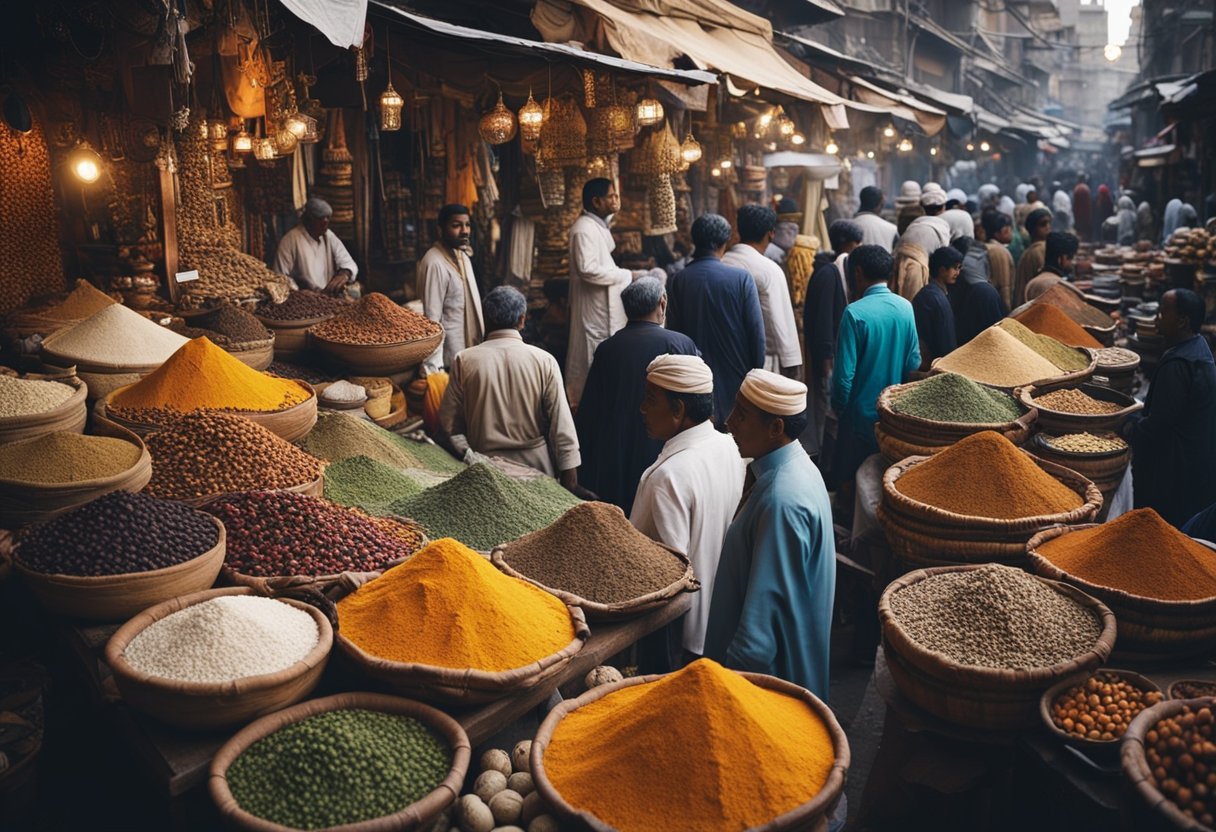
Impact of Historical Events
The bazaars have withstood numerous earthquakes and fires, events that would typically spell the end for less robust institutions. For instance, Istanbul’s Grand Bazaar has experienced devastating earthquakes, such as the one that struck in 1766, leading to significant reconstruction efforts. Fires have also played a role in shaping the bazaar’s history, and under leaders such as Sultan Mehmed II, the Ottoman Empire had to contend with such calamities, implementing restoration and expansion, which allowed the bazaars to continue serving as bustling trade centres.
Adaptation to Modern Economy
Bazaars have faced a decline in relevance with the advent of the modern shopping mall, yet through adaptation, they remain significant. Their resilience is evident in their transformation from traditional marketplaces to tourist destinations, integrating contemporary retail practices without surrendering their unique cultural identities. They now facilitate a booming tourism economy, dealing with local and international visitors. Despite the pressure to modernise, the charm and historical significance of Middle Eastern bazaars, much like Persian bazaars which have prevailed through the centuries, ensure their survival in the modern economic landscape.
Everyday Life in the Bazaars
The bazaars are bustling hubs of activity where the vibrancy of trade and the richness of cultural exchanges come to life. Here, amid the maze of stalls, the essence of shopping in the Middle East reveals itself through the interactions of shopkeepers, hagglers, and an array of goods, from luxurious silks to everyday commodities.
Shopkeepers and Stalls
Our stroll through the bazaar uncovers over 4,000 shops, each operated by shopkeepers who are the custodians of this traditional marketplace. These stalls tessellate perfectly into one another like a well-crafted mosaic, offering everything from handcrafted sandals to the iconic fez. Each shopkeeper, an expert in their wares, is as much a part of the bazaar’s fabric as the goods they sell, often providing insights and stories that enrich the shopping experience.
Haggling and Transactions
Haggling is not only customary but an art form in these bazaars. Transactions here involve a dynamic exchange where both shoppers and shopkeepers engage in a spirited dialogue to strike a deal. The verbal dance of offer and counteroffer eventually culminates in a mutually satisfactory agreement, with visitors often walking away feeling they’ve participated in a ritual as ancient as the bazaar itself.
Unique Aspects of Bazaars
Bazaars offer a sensory journey not found elsewhere. They are notable for their traditional tea houses and one-of-a-kind souvenirs that reflect the region’s rich cultural heritage.
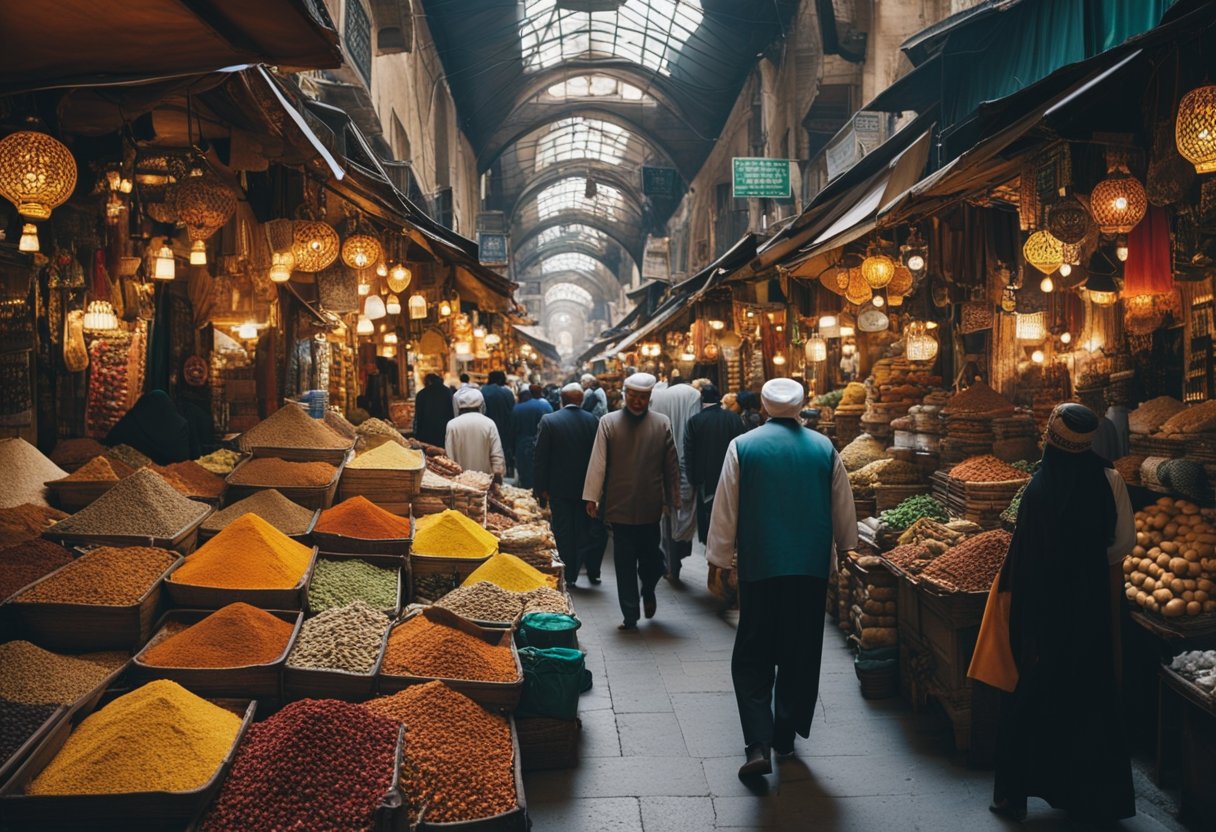
The Role of Tea Houses
Tea houses are the social heartbeat of these bazaars, where traders and customers alike converge over a cup of tea. These establishments offer respite and a chance to savour quality tea amidst the bustling market activities. In places like the Sandal Bedesten of Constantinople, now Istanbul, tea houses serve as informal meeting spaces where business and pleasure intertwine seamlessly.
Distinctive Souvenirs
Every bazaar is a treasure trove of souvenirs that encapsulate the essence of the locale. The covered bazaars are particularly famous for their vast array of goods, ranging from intricately woven carpets to bespoke jewellery. Here, each shop takes pride in the quality and uniqueness of its offerings, ensuring visitors can find exclusive keepsakes to remember their visit.
Influence on Literature and the Arts
The grand bazaars of the Middle East have not only been centres for trade but also melting pots of cultural and artistic inspiration, profoundly influencing literature and the arts throughout history.
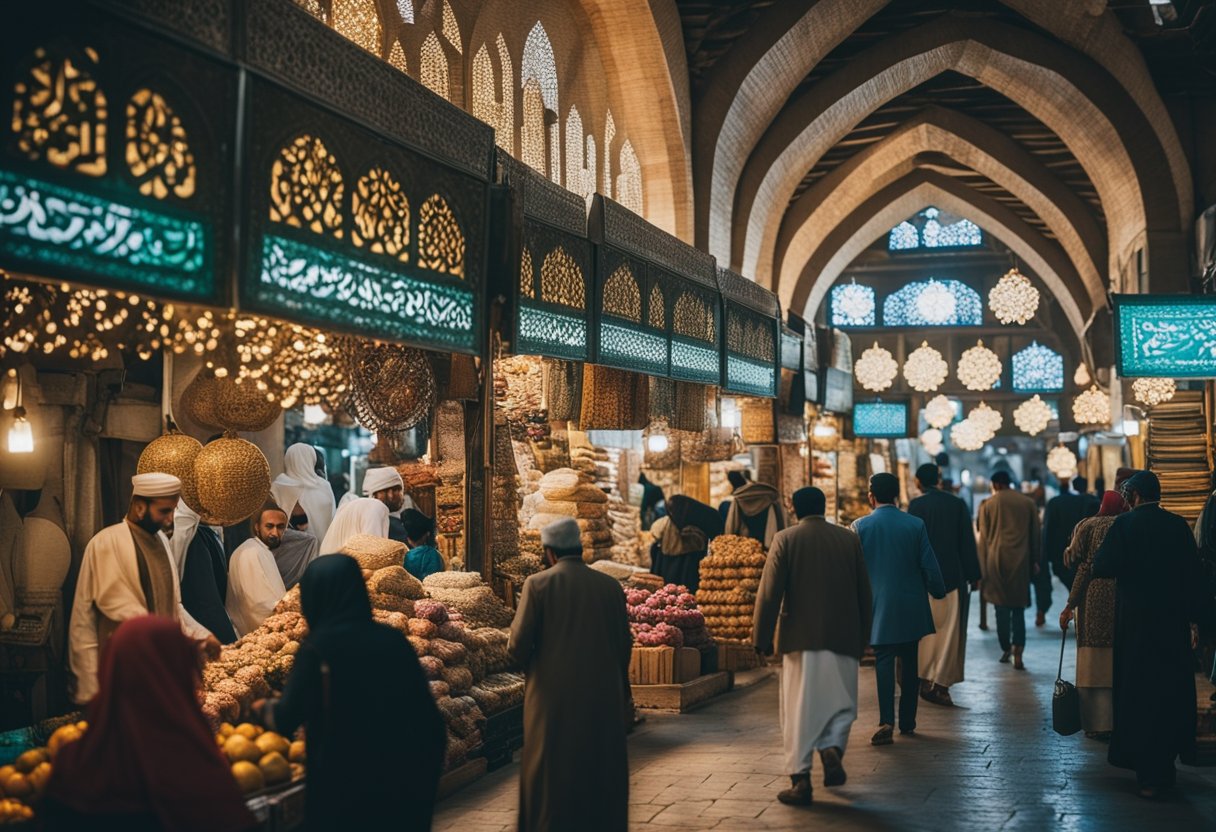
From ‘Arabian Nights’ to Contemporary Narratives
The labyrinthine alleys and vibrant atmosphere of Middle Eastern souks are intricately woven into the fabric of One Thousand and One Nights, often known in English as Arabian Nights. This seminal collection of Middle Eastern folk tales centred around the storyteller Scheherazade has roots that burrow deep into the cultural ethos of places such as Marrakech and Acre. Stories set against these markets’ backdrop have captured countless readers’ imaginations, depicting a world where the mundane meets the marvellous.
Poets and storytellers, historically, have found a wealth of material in the hustle and bustle of the bazaar. Persian poetry, in particular, reflects the bazaar’s significance as a hub of commerce, daily social interaction, and the human condition. The souk indeed reflects the cultural heartbeat of cities like Tangier, where the exchange of goods is paralleled by an exchange of ideas and narratives, contributing to a rich tapestry of local literature.
In contemporary narratives, the essence of the Middle Eastern markets continues to resonate, providing fertile ground for both literary and artistic endeavours. Modern writers and artists draw from the same wellspring that nourished their predecessors, illustrating that the bazaars’ influence is as relevant today as it was centuries ago. These markets, bustling with life, have proven timeless muses for the creative world.
Preservation, Conservation, and the Future
The Grand Bazaars of the Middle East are centres of commercial activity and pivotal historic sites requiring continuous efforts in preservation and adaptation to remain vibrant.
Renovation and Heritage Efforts
We recognise that maintaining these historical markets’ architectural integrity and cultural essence is crucial. Efforts to renovate these spaces often face challenges, particularly in regions prone to natural disasters such as earthquakes. The beginning of preservation lies in strengthening structures and implementing conservation practices that ensure these bazaars’ longevity and continued relevance.
The Bazaar in the Digital Age
We must acknowledge the digital realm as the new frontier for the Grand Bazaars. As e-commerce becomes ubiquitous, our bazaars face a potential decline in traditional footfall. Yet, this is also the beginning of a fresh chapter where digital platforms can complement the physical market experience. We are seeing a transition, with initiatives to virtualise these historically rich marketplaces, thus reaching a global audience and ensuring their enduring legacy. The future of these age-old marketplaces is intertwined with our will to preserve their past while innovatively integrating them into the digital era.
Which Grand Bazaar have you been to before? Tell us all about it in the comments.





